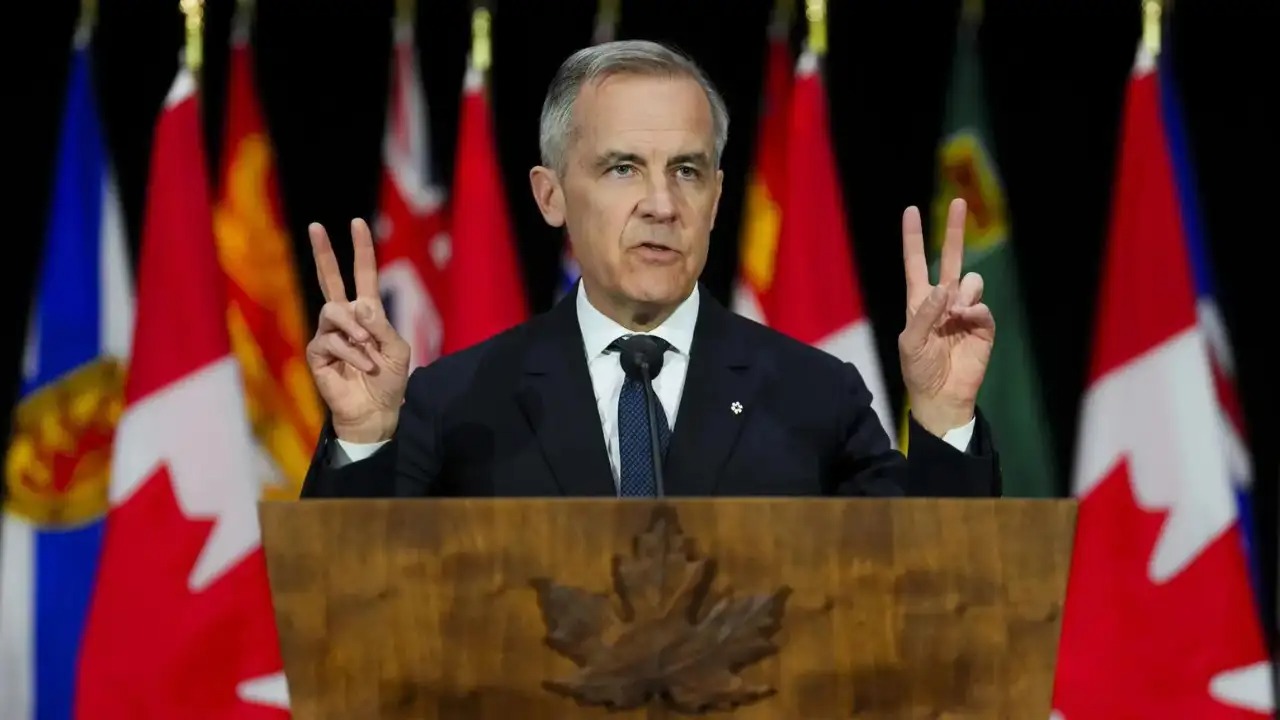
The handshake has been replaced with a hard line (Canada-U.S. Trade Relations).
Canada has publicly declared the end of its “old relationship” with the United States, signaling a fundamental realignment of trade priorities after a fresh wave of U.S. tariffs sent diplomatic relations into a tailspin.
On the heels of President Trump’s announcement imposing a 25% tariff on all imported cars and parts—including those from Canada—Prime Minister Mark Carney held an unflinching press conference, declaring that “the United States is no longer a reliable partner.”
The statement wasn’t offhand. It was intentional and marked the clearest indication yet that Canada is preparing for a long-haul economic pivot away from its largest trading partner.
“We will fight the U.S. tariffs with retaliatory trade actions of our own that will have maximum impact in the United States and minimum impact here in Canada,” Mark Carney said. “Nothing is off the table.”
The automotive tariffs were the last straw.
Although tensions have been escalating since the first rounds of tariffs on steel and aluminum, Trump’s decision to hit car imports—and parts like engines, transmissions, and electrical systems—was met with near-universal backlash from Canadian officials and business leaders.
The impact is immediate. Nearly 75% of Canada’s exports go to the United States, and the auto industry, deeply integrated across North American borders, now faces a web of logistical and financial hurdles.
This new round of tariffs affects not only Canadian manufacturers but also American automakers who assemble vehicles in Canada for U.S. sale. It disrupts supply chains that took decades to build and throws uncertainty across an industry already navigating electrification, AI integration, and shifting consumer demand.
Canada’s response is more than reactionary—it’s strategic.
Mark Carney emphasized that this is not just tit-for-tat politics. It’s a recognition that Canada must begin to fundamentally rethink its trade relationships and build new alliances that are less dependent on U.S. policy swings.
“It is clear that the United States is no longer a reliable partner,” Carney said. “It is possible that with comprehensive negotiations, we will be able to restore some trust, but there will be no turning back.”
That trust, forged over decades of NAFTA, USMCA, and military and political cooperation, now lies fractured. Trump’s threat to impose even higher tariffs if Canada and the EU “work together to harm the U.S.” only escalated the rhetoric.
In a late-night social media post, the president warned:
“If the European Union works with Canada in order to do economic harm to the USA, large-scale Tariffs, far larger than currently planned, will be placed on them both!”
He’s reply? Cool, clipped: “I take note of the President’s comment. I don’t take direction from it.”
Retaliation will be measured—but pointed.
Mark Carney has already hinted at tariffs on U.S. goods, with excise duties on oil, potash, and other Canadian exports on the table. Provincial premiers and business leaders have been summoned for consultations. Canada’s response will be multi-pronged: economic, diplomatic, and legislative.
“We must respond with both purpose and force,” and vowed that Canada would do everything to “defend our workers and our country.”
Markets took note. Stock prices for major automakers slid as investors assessed the fallout. Supply chain executives are now running scenarios, preparing for a potential cascade of cost increases and logistical snarls across North America.
The announcement comes just weeks before Canada’s general election, where Mark Carney is expected to secure a strong Liberal mandate. His decision to pause campaigning and address the crisis signals the stakes.
Mark Carney is also urging a national effort to rebuild and expand the domestic auto sector. The goal? Reduce reliance on U.S. markets, stimulate internal innovation, and diversify trade flows toward Europe and the Asia-Pacific.
Polls show Canadians largely support a harder stance. And he is betting that a strong mandate in the upcoming election will give him the leverage to reframe Canada’s global trade priorities—whether or not Washington comes back to the table.
In less than a week, Canada is expected to unveil its full list of retaliatory tariffs. Analysts are watching closely—not just for the details, but for what they represent: a structural decoupling between two of the world’s most interconnected economies.
However, a trade war with the U.S. could be damaging for Canada in the short term. But Carney’s messaging is clear: this is about sovereignty, stability, and the future of a rules-based trading system.
“When President Trump threatens us again, we will fight back … with everything we have to get the best deal for Canada.”
Share this article: